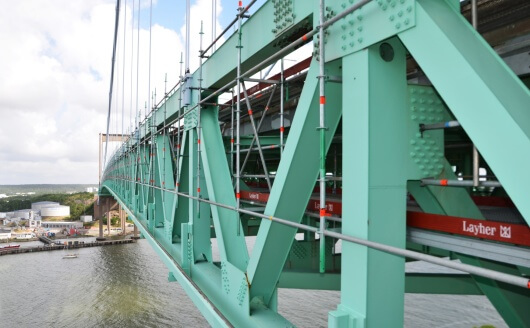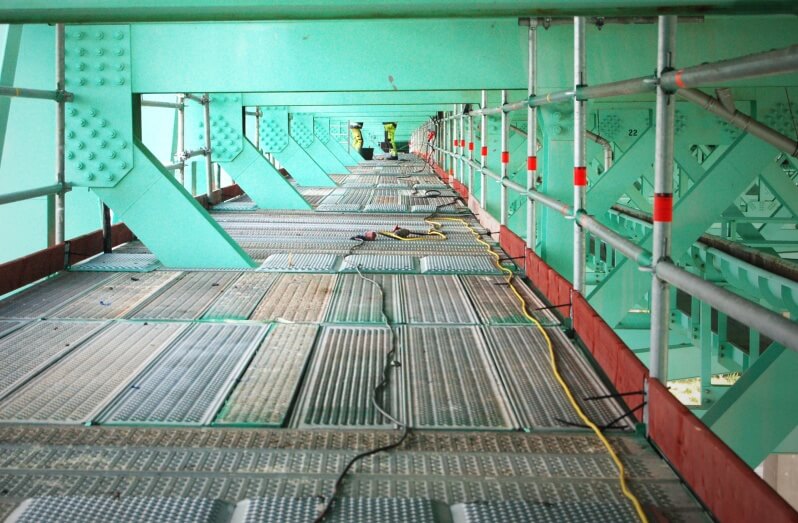The construction business is encountering an extraordinary transformation. With world wide infrastructure paying hitting $2.6 trillion annually, the backbone promoting these substantial tasks has be more important than ever. Sophisticated scaffolding infrastructure bridges (byggnadsställningar infrastruktur broar) programs are no more only short-term structures—they're strategic tools that may produce or break task timelines and budgets.
Recent business data suggests that infrastructure jobs employing contemporary scaffolding alternatives total 40% faster than those depending on mainstream methods. That dramatic improvement stems from increased accessibility, structured security protocols, and optimized workflow management that today's scaffolding systems deliver.
Market Trends Reshaping Scaffolding Demand
Infrastructure preservation dominates scaffolding purposes, representing 60% of total industry usage. That shift reflects a crucial fact: ageing infrastructure across developed nations involves intensive restoration work. Links created during the building growth of the 1960s and 1970s today need detailed maintenance programs to stay secure and functional.

The rental scaffolding market has surged, growing 8.2% annually as construction companies prioritize detailed mobility over capital investment. Little to moderate companies gain considerably from rental designs, opening cutting-edge security systems without significant transparent costs.
Electronic integration is revolutionizing scaffolding operations. Projects adding electronic planning methods report 25% fewer safety situations and achieve 30% quicker startup occasions compared to traditional preparing approaches. That technological advancement allows challenge managers to see complicated installations before crews arrive on-site.
Safety Statistics Drive Innovation
Workplace safety stays the primary driver for scaffolding innovation. Fall-related incidents account for 33% of structure fatalities, creating reliable scaffolding programs required for guarding individuals running at height.
Contemporary scaffolding technologies have accomplished a 45% reduction in fall situations compared to basic alternatives. That improvement effects from sophisticated guardrail methods, increased platform security, and greater integration with personal protective equipment. Insurance organizations realize these protection changes, giving 20% lower premiums for jobs applying qualified scaffolding systems.
Infrastructure Categories Driving Growth
Bridge maintenance jobs consume 35% of scaffolding resources, highlighting the critical need to steadfastly keep up transportation infrastructure while reducing traffic disruption. Specific connection access systems permit maintenance crews to perform safely while maintaining roadways detailed during repairs.
High-rise creating maintenance presents 28% of scaffolding applications. Metropolitan occurrence raises drive demand for scaffolding alternatives that purpose successfully in confined places while maintaining rigid safety standards. These methods must steer complex urban surroundings while providing protected access to creating exteriors.
Professional ability maintenance requires 22% of scaffolding volume, encouraging petrochemical plants, energy era features, and manufacturing operations where downtime charges a large number of dollars per hour. These purposes demand specific scaffolding that can resist severe professional situations while giving safe use of important equipment.
Economic Impact on Project Outcomes
Tasks employing reliable scaffolding solutions record 15% decrease overall prices despite higher original equipment expenses. These savings emerge from paid off labor requirements, fewer safety-related delays, and accelerated completion schedules that decrease expense costs.
Weather-resistant scaffolding methods increase functioning periods by approximately six months annually in upper climates. That expansion offers substantial economic benefits for technicians handling periodic construction schedules, allowing effective function all through typically complicated climate conditions.

Future Infrastructure Investment Landscape
Government infrastructure legislation totaling $1.2 billion over the next decade can sustain solid need for scaffolding solutions. This massive expense stresses largely on preservation and modernization of active infrastructure as opposed to new structure, producing regular demand for access solutions.
Sustainable scaffolding components are developing traction, with 18% of significant tasks today specifying environmentally friendly options. That trend aligns with broader structure industry sustainability initiatives and significantly stringent government environmental requirements.
The scaffolding business continues adapting to meet up growing infrastructure needs while prioritizing staff safety and task efficiency. Structure companies that invest in reliable scaffolding unions position themselves logically for the infrastructure opportunities ahead, ensuring they could deliver jobs safely, efficiently, and profitably in a increasingly competitive market.
